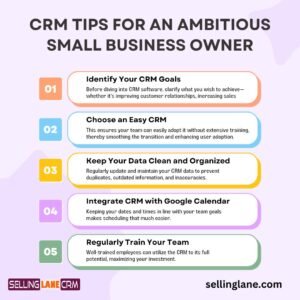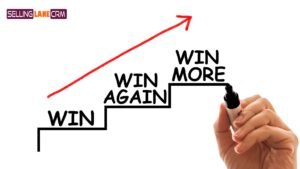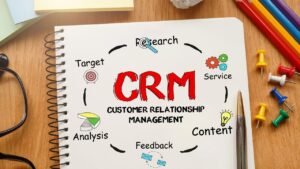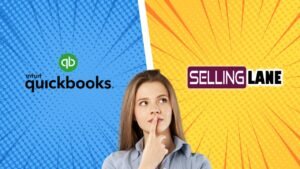
Identifying your CRM goals is like charting a map for a treasure hunt, where the treasure is a thriving, loyal customer base and the map is your strategic plan. It’s about pinpointing exactly what you want to achieve with your CRM system to support your business’s growth and enhance customer satisfaction. For a company like Selling Lane, LLC, this could involve several specific objectives, each tailored to different aspects of customer relationship management. The primary aim could be to improve customer retention rates by 15% within a year by offering more personalized follow-ups and support, thereby deepening relationships and fostering loyalty. Another goal might be to increase the efficiency of sales teams by 25% through better lead management and prioritization, streamlining the sales process from initial contact to close.
Beyond these, CRM goals should also focus on harnessing data to gain actionable insights. This means setting objectives around the collection, analysis, and application of customer data to refine marketing strategies, tailor product offerings, and predict customer needs before they even arise. For Selling Lane, this could translate into using CRM analytics to identify cross-selling and upselling opportunities, thereby boosting average transaction values by a targeted percentage. By setting clear, measurable goals in these areas, a business can ensure its CRM strategy is not just a concept but a driving force behind achieving tangible outcomes that propel the company forward. Read Full Article on CRM Goals
Choosing the right CRM for your business is akin to selecting the perfect pair of shoes for a marathon; comfort, fit, and long-term support are paramount. The “right” CRM should feel like an extension of your team, empowering your business without adding unnecessary complexity. For a company like Selling Lane, LLC, with its goal of reaching and managing thousands of customer relationships while aiming for a significant monthly viewership, the CRM chosen must strike a balance between comprehensive functionality and user-friendly design.
First off, simplicity is key. An easy-to-use CRM doesn’t bog down your team with a steep learning curve; instead, it fits seamlessly into your existing processes, enhancing productivity right out of the box. This means looking for a platform with an intuitive interface, straightforward customization options, and responsive customer support. Additionally, it should offer easy integration with the tools your team already relies on, be it email, calendar apps, or customer service software, creating a cohesive ecosystem that centralizes customer information and interactions.
Moreover, scalability cannot be overlooked. As Selling Lane aims to expand its reach, the CRM must be able to grow alongside the business, accommodating an increasing number of contacts, more complex customer journeys, and evolving sales strategies without a hitch. This flexibility ensures that as the company scales, the CRM remains a pillar of support rather than a bottleneck to growth. In essence, choosing the right CRM for Selling Lane involves finding a solution that is not just easy to use but also aligns with the company’s ambitious growth trajectory, ensuring the marathon ahead is run on a path of efficiency, engagement, and expansion. Read Full Article
Keeping your data clean and organized in your CRM is like maintaining a well-oiled machine; it ensures everything runs smoothly and efficiently, preventing costly breakdowns. For a company like Selling Lane, LLC, where data is the lifeblood of decision-making and customer relationship management, this practice is non-negotiable. Clean data directly translates into more accurate insights, better-targeted marketing campaigns, improved customer service, and ultimately, a more streamlined sales process. It’s the groundwork that supports every strategy aimed at reaching that ambitious target of 20,000 viewers per month.
Start with regular data audits. This involves periodically reviewing the data within your CRM to identify and rectify inaccuracies, duplicates, or outdated information. Implementing standardized data entry practices is crucial here; it minimizes the risk of errors from the get-go. For instance, establishing clear guidelines on how contact names, addresses, and other key details are entered can significantly reduce inconsistencies.
Moreover, leverage the power of automation wherever possible. Many modern CRM systems offer tools that can automatically clean and update records, merge duplicates, or flag data that seems out of place. This not only saves time but also ensures your data remains in top shape with minimal manual intervention.
Organizing your CRM data also means categorizing and segmenting it in a way that aligns with your business goals. For Selling Lane, this could involve segmenting customers based on their interaction history, potential value, or feedback. Such segmentation enables personalized marketing efforts and sales pitches, making your approach more effective and increasing the chances of achieving those viewer targets.
In essence, keeping your CRM data clean and organized is an ongoing commitment that pays off in enhanced efficiency, sharper insights, and more meaningful customer interactions. For Selling Lane, it’s a critical step toward sustaining growth and achieving its strategic objectives. Read Full Article on Keeping Your CRM Data Clean
Integrating your CRM with Google Calendar is like setting up a backstage pass for your entire team to sync effortlessly with each other’s schedules, ensuring that no beat is missed in the customer relationship symphony. For a business like Selling Lane, LLC, aiming to engage and manage a vast array of customer interactions efficiently, this integration can be a game-changer. It streamlines appointment setting, follow-ups, and reminders, thus ensuring that the team remains in harmony, and every customer interaction is timed to perfection.
Imagine the convenience of directly scheduling meetings from within your CRM and having them automatically populate in Google Calendar, visible across your organization. This not only saves time but also significantly reduces the chances of double-booking or missing meetings. It allows the sales team at Selling Lane to focus more on what they do best – building relationships and closing deals – rather than juggling calendars.
Moreover, this integration facilitates a more personalized approach to customer engagement. With access to an organized calendar view of customer interactions, the team can easily identify opportunities to reach out at the right time, be it for follow-ups, product demos, or simply to check in. This timely interaction can significantly enhance customer satisfaction and loyalty, which are crucial for achieving Selling Lane’s viewership goals.
Additionally, integrating your CRM with Google Calendar enhances transparency and collaboration among teams. It allows everyone, from sales to customer support, to have a unified view of customer engagements, upcoming appointments, and deadlines. This level of visibility ensures that everyone is on the same page, fostering a more cohesive and efficient approach to managing customer relationships.
In essence, integrating your CRM with Google Calendar is a strategic move that can streamline operations, enhance team coordination, and elevate the customer experience. For Selling Lane, it’s not just about keeping schedules in check; it’s about leveraging every opportunity to connect with customers in a timely and meaningful way, driving towards that goal of reaching 20,000 viewers per month. Read Full Article on Google Calendar Integration
Regularly training your team is the keystone in the arch of CRM success, binding together all other strategies and ensuring they work in concert to achieve your goals. For Selling Lane CRM, with its ambitious target of engaging at least 20,000 viewers per month, equipping the team with the latest skills, knowledge, and best practices in CRM use is non-negotiable. It’s about creating a culture of continuous learning and improvement, ensuring the team is not just familiar with the tools at their disposal but also masters in leveraging them to enhance customer relationships.
This commitment to training ensures that every team member, from sales to customer support, fully understands how to utilize the CRM to its fullest potential. Whether it’s keeping data clean and organized, integrating with tools like Google Calendar for better time management, or utilizing analytics for strategic insights, regular training sessions keep these practices top of mind. Moreover, as CRM technologies evolve, so too do the capabilities they offer. Regular training sessions ensure that Selling Lane’s team remains at the cutting edge, able to take advantage of new features and integrations that can improve efficiency and customer engagement.
Training also fosters a sense of ownership and confidence among team members. When they are well-versed in the CRM system, they are more likely to use it proactively, exploring new ways to enhance customer interactions, streamline processes, and ultimately contribute to reaching the company’s viewership and growth objectives. It turns the CRM from a mere tool into an integral part of their strategy for success.
Tying it all together, regular team training is the catalyst that ensures the CRM strategy is not just theoretically sound but practically effective. It’s about bringing to life the goals of improving customer relationships, enhancing efficiency, and driving growth. For Selling Lane, investing in team training is investing in the very foundation of their ambitious growth strategy, ensuring that the entire team is aligned, capable, and motivated to use the CRM not just as a database, but as a dynamic engine for achieving their vision. Read more about CRM Success

Amazing Software.
Amazing Teams Flourish with
Try Free
The EASY CRM For Everyone!
Is this CRM for Me?

TASK MANAGEMENT
The EASY CRM For Everyone!
Get More Things Done with
31 Day Trail
Is Task Management for Me?

Invoicing & pay links
Try Free
Get paid faster
The EASY CRM For Everyone!
Is link to pay for me?

Try Free
Product Menus
Sell items faster with
Is Menu Selling for Me?

Route Optimization
Try for free
Plan your routes in minutes with
Is route optimization for me?
setREVStartSize({c: 'rev_slider_1_1',rl:[1240,1024,778,480],el:[600,600,600,600],gw:[1300,1300,600,600],gh:[600,600,600,600],type:'standard',justify:'',layout:'fullwidth',mh:"0"});if (window.RS_MODULES!==undefined && window.RS_MODULES.modules!==undefined && window.RS_MODULES.modules["revslider11"]!==undefined) {window.RS_MODULES.modules["revslider11"].once = false;window.revapi1 = undefined;if (window.RS_MODULES.checkMinimal!==undefined) window.RS_MODULES.checkMinimal()}




 Amazing Software.
Amazing Teams Flourish with
Try Free
The EASY CRM For Everyone!
Is this CRM for Me?
Amazing Software.
Amazing Teams Flourish with
Try Free
The EASY CRM For Everyone!
Is this CRM for Me?












